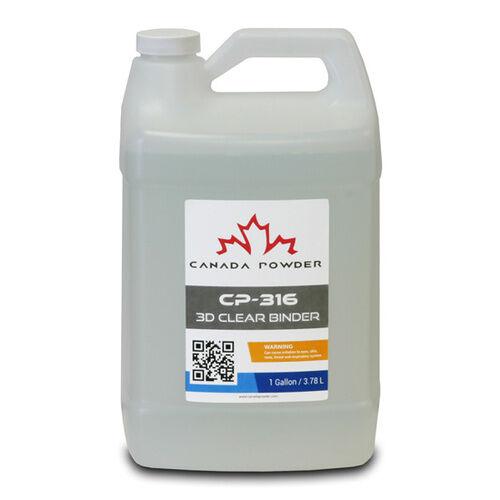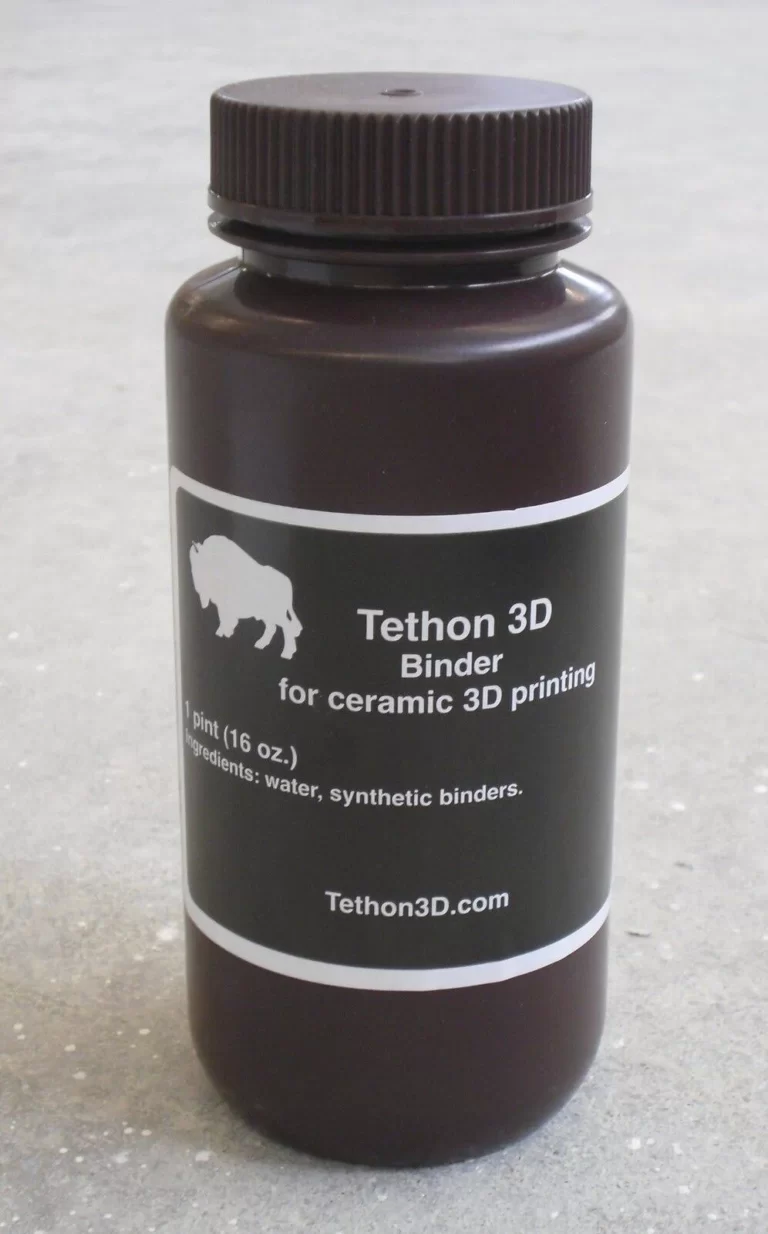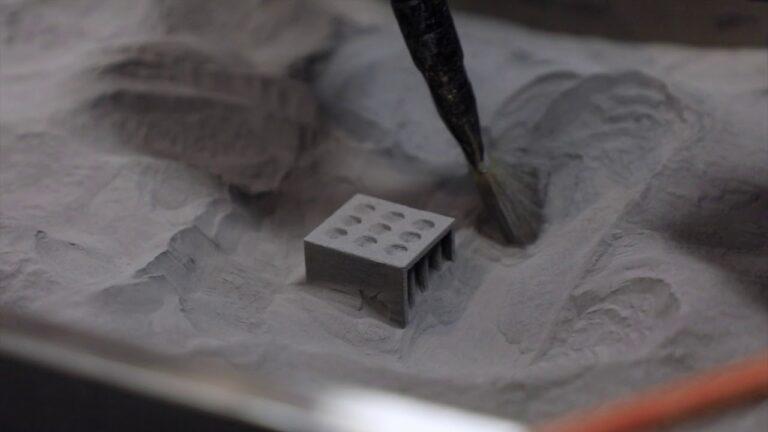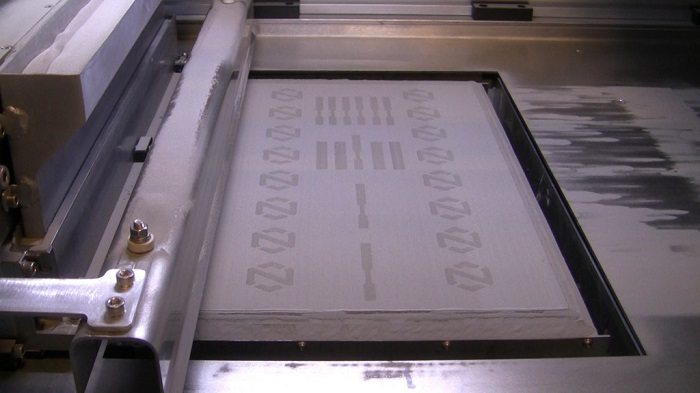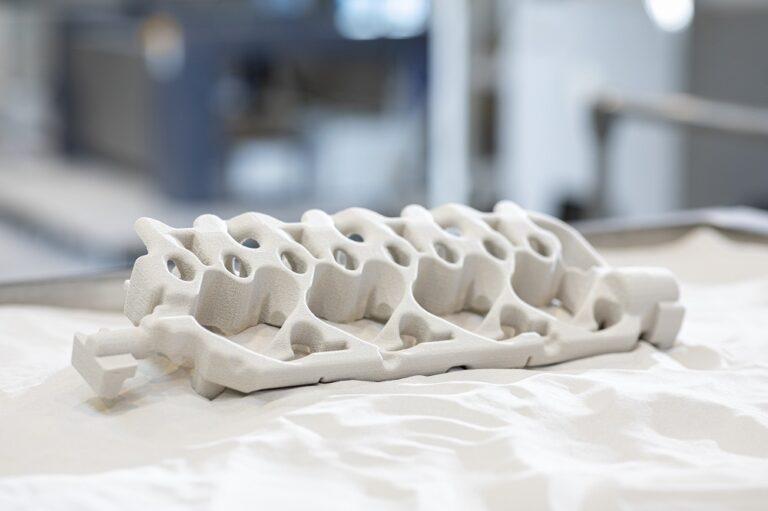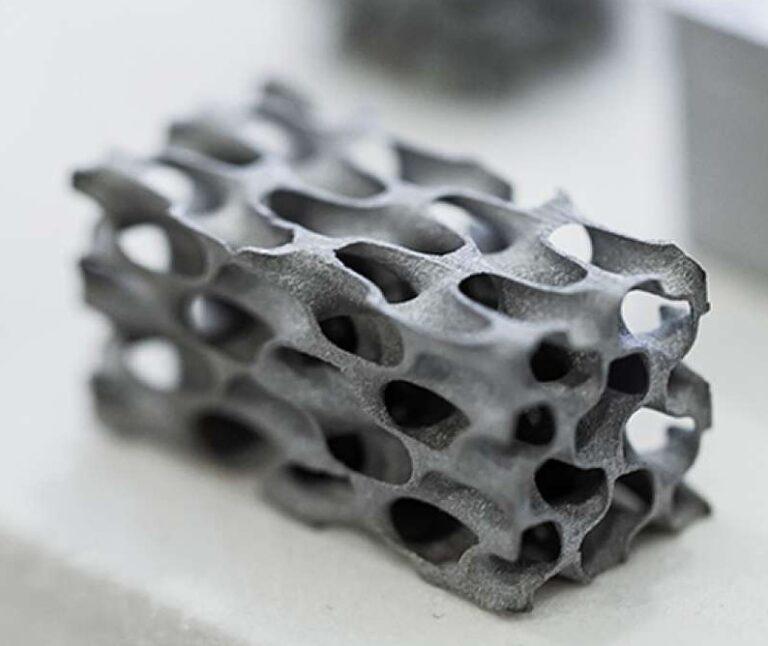A Closer Look for Binder Jet Printer: How it Works and What Makes it Unique
Overview of Binder Jet Printing Technology: Features, Components, and Specifications
Binder Jet Printing is an additive manufacturing technology that involves the deposition of a liquid binder onto a powder bed to create a three-dimensional object. People know this technology for its high speed, low cost, and ability to work with a wide range of materials. The Binder Jet Printer is the primary device that people use for Binder Jet Printing.
Components
The Binder Jet Printer consists of several components, including a print bed, printhead, and powder delivery system. The object is built on the print bed. a print bed can be made of metal or ceramic. Printhead deposits the binder onto the powder bed. The piezoelectric or thermal printhead can be used. The powder delivery system stores and dispenses the powder onto the print bed.
Specifications
The Binder Jet Printer has several specifications that determine its capabilities, such as the maximum print volume, print resolution, and build speed. The maximum print volume refers to the maximum size of the object that can be printed. The print resolution is the thickness of each layer of powder and binder deposited by the printhead. The build speed is the rate at which the object is built, and it is influenced by the size and complexity of the object.
Features
Some of the unique features of the Binder Jet Printer include its ability to print objects with complex geometries, its high printing speed, and its low cost compared to other 3D printing technologies. Additionally, the Binder Jet Printer can work with a variety of materials, such as metals, ceramics, and polymers.
In this blog post, we will provide an overview of the Binder Jet Printer, its components, and its specifications. We will also discuss the unique features of this technology and its applications in various industries.
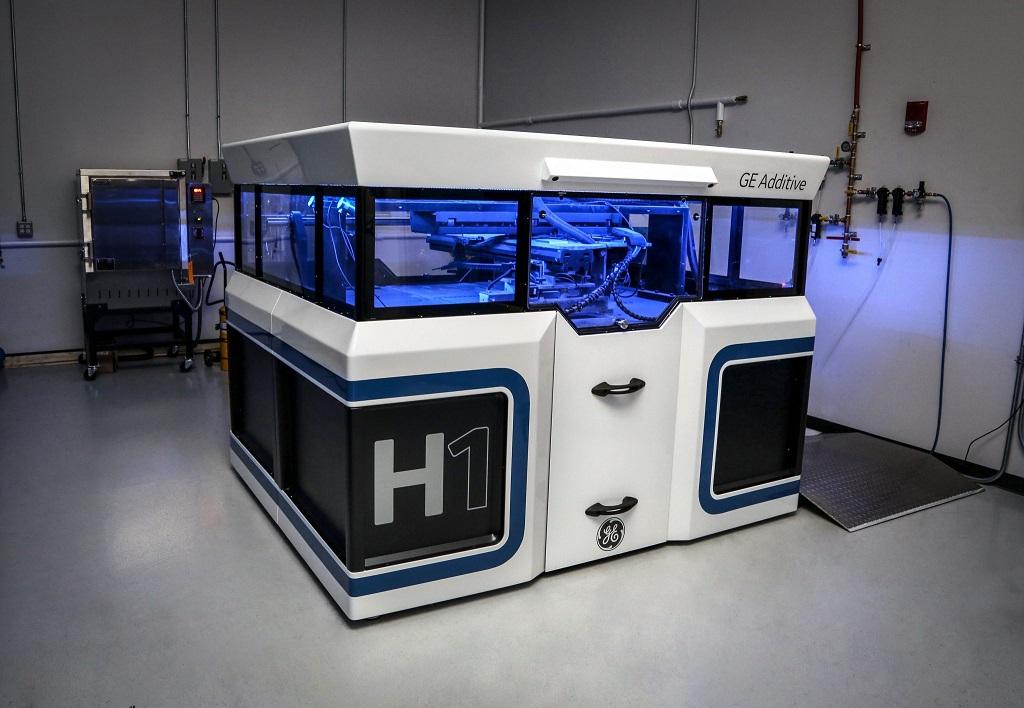
Physical Examination of the Binder Jet Printer: Size, Weight, and Build Quality
The physical examination of a Binder Jet Printer involves analyzing its size, weight, and build quality. Printer size varies by model; some are for small-scale production and others for industrial use. Printer weight also varies; some weigh a few hundred pounds, others several tons.
Size of the Binder Jet Printer
The size of the Binder Jet Printer can vary depending on the specific model and its intended use. Manufacturers design some models for desktop use with a compact size that can fit on a small work surface. They also design other models for industrial use with a much larger size to accommodate the printing of large or heavy objects. The size of the printer can also impact its portability, with smaller models being easier to transport between locations.
Weight of the Binder Jet Printer
The weight of the Binder Jet Printer can vary depending on the specific model and its construction. Smaller models may weigh only a few hundred pounds, while larger models can weigh several tons. The weight of the printer can affect its stability during printing and its ability to withstand vibrations and other stresses. It can also impact the ease of transportation and installation, with heavier models requiring more effort and equipment to move and set up.
Build Quality
The build quality is crucial. It affects precision and accuracy. It’s important to consider. A well-built printer produces high-quality prints. A poorly built printer produces prints with defects. It may cause inaccuracies.
You can assess the build quality of the Binder Jet Printer by examining its components and construction. The printer must use high-quality materials. These materials should withstand printing stresses. Printing stresses include vibration and temperature changes. The components should be securely fastened. Defects or damages must not affect the printer’s performance. The manufacturer should ensure components are defect-free.
The size, weight, and build quality matter when choosing a Binder Jet Printer. Too small or too light printers cannot make big or heavy objects. Poor build quality leads to defective or inaccurate prints.
In conclusion, the physical examination of the Binder Jet Printer provides valuable insights into its size, weight, and build quality. Evaluating factors helps determine printer suitability. Suitability ensures high-quality prints with minimal errors. Consider factors to produce high-quality prints. Evaluation helps determine the printer’s suitability.
Software and User Interface: Ease of Use, Features, and Compatibility
The software and user interface significantly impact the functionality and usability of the Binder Jet Printer. The program is in charge of creating the 3D models and translating them into a printer-friendly format. The user interface gives the user command over the printer, enabling them to change the settings and keep track of the print job’s progress.
Ease of Use
Binder Jet Printing software frequently has features that make printing simpler and user-friendly. The printer produces automatic support to stabilize the object being printed and automatically dispenses the right amount of powder onto the print bed. Additionally, the software can offer tools for editing and personalizing the 3D models, increasing design flexibility.
Features
The Binder Jet Printer’s user interface is made to be simple and straightforward to use. Depending on the printer type, it may come with a touch screen or a computer interface. The user interface gives immediate feedback on the progress of the print job and lets the user change settings including print speed, temperature, and resolution. The interface can also show alarms and error messages, which makes it simple for the user to resolve any potential problems.
Compatibility
Another crucial aspect to take into account while utilizing the Binder Jet Printer is compatibility. The software and user interface should be compatible with the operating system of the computer or other device used to control the printer. In order to give designers more flexibility during the design process, the software should also be able to import and export 3D models in a number of file formats.
Overall, the Binder Jet Printer’s software and user interface are very important to the printing process. When selecting a Binder Jet Printer, ease of use, features, and compatibility are crucial factors to take into account. Users may speed up the printing process and get high-quality results by choosing a printer with user-friendly software and a practical user interface.
Print Bed and Powder Delivery System: Capacity, Functionality, and Maintenance
The Binder Jet Printer’s print bed and powder delivery system are essential parts because they are in charge of distributing and delivering the powder to the print bed. The print bed constructs the thing, requiring it to be strong enough to sustain the weight of the object during printing. On the other hand, the exact and regulated application of the powder to the print bed is the responsibility of the powder delivery system.
Capacity
When choosing a Binder Jet Printer, the print bed and powder delivery system capacity are crucial. The powder delivery system must be capable of dispensing the right amount of powder onto the print bed, and the print bed must be big enough to handle the size of the object being printed. Using several print beds, which can improve the printer’s overall capacity, is a feature available on some Binder Jet Printers.
Functionality
It’s crucial that the print bed and powder delivery system work properly because they have an impact on the printed object’s consistency and quality. The powder delivery system must be able to place the powder onto the print bed with a high degree of accuracy, and the print bed must be able to maintain a constant temperature during the printing process. Factors including humidity, temperature, and the kind of powder being used can all have an impact on how well these parts perform.
Maintenance
The Binder Jet Printer’s durability and effectiveness depend on regular maintenance of the print bed and the powder supply mechanism. Routinely cleaning and inspecting the print bed can avoid the buildup of powder and debris that could compromise the quality of the printed object. Frequent inspection and cleaning of the powder delivery system are also necessary to ensure that it operates properly.
In conclusion, the print bed and the powder supply system are crucial parts of the Binder Jet Printer, and its performance, capacity, and upkeep are crucial factors to take into account while choosing and utilizing this technology. Users can achieve high-quality and consistent results by selecting a printer with a high-quality print bed and powder supply system and correctly maintaining these components.
Printhead and Ink Delivery System: Precision, Accuracy, and Durability
The printhead and ink delivery system are critical components of the Binder Jet Printer, responsible for delivering the ink to create the final printed object. The printhead must be able to deliver the ink with precision and accuracy to ensure the quality of the printed object.
Precision, Accuracy
The accuracy of the printhead and ink delivery system is essential to achieve high-quality results. The printhead must be able to deposit the ink onto the print bed with a high degree of accuracy, ensuring that the final printed object is true to its design. The ink delivery system must also be able to provide a consistent flow of ink to the printhead, ensuring that the ink is deposited evenly onto the print bed.
Durability
The reliability and durability of the printhead and ink delivery system are also important considerations when selecting a Binder Jet Printer. The printhead must be able to withstand the wear and tear of repeated use, and the ink delivery system must be able to function reliably over time. This can be achieved through the use of high-quality materials and precision engineering.
Maintenance of the printhead and ink delivery system is important to ensure their longevity and performance. Regular cleaning and inspection can prevent the buildup of debris and ensure that the printhead and ink delivery system are functioning properly. In addition, replacing worn or damaged components can help to prolong the life of the printhead and ink delivery system.
In summary, the printhead and ink delivery system are critical components of the Binder Jet Printer, and their precision, accuracy, and durability are important considerations when selecting and using this technology. By choosing a printer with a high-quality printhead and ink delivery system, and by properly maintaining these components, users can achieve high-quality and consistent results.
Printing Performance: Speed, Quality, and Consistency
When assessing the Binder Jet Printer’s capabilities, printing performance is a crucial factor. This covers the pace at which the printing is done, the caliber of the printed item, and the reliability of the outcomes.
Speed
For many customers, especially those who demand high volumes of printed items, speed is a crucial consideration. High printing speeds are possible with the Binder Jet Printer; some models can crank out up to several hundred components per hour. The complexity of the product, the number of layers, and the characteristics of the material are only a few examples of variables that might affect print speed.
Quality
Another important factor is the printed object’s quality. The Binder Jet Printer is able to create excellently detailed objects with smooth surfaces. Precise engineering and high-quality materials ensure that the final printed object meets the necessary criteria. You can adjust the print resolution and layer thickness to achieve the desired level of detail.
Consistency
When assessing the printing capabilities of the Binder Jet Printer, consistency is a crucial component. The ability of the printer to consistently provide the same results, regardless of the print volume or other variables, is referred to as consistency. The printer can run consistently and produce high-quality products with accuracy and precision when using cutting-edge software and hardware.
In conclusion, the Binder Jet Printer’s printing capabilities are distinguished by its speed, quality, and consistency. Users can get consistent, high-quality results by choosing a printer with the right specifications and using it correctly.
Materials Compatibility: Types of Powders, Binders, and Inks
In the following paragraphs, we will explore the compatibility of materials used in the Binder Jet Printer. The printer is compatible with various types of powders, binders, and inks, making it a versatile printing option.
Powders
Powders used in the Binder Jet Printer can include metals, ceramics, and polymers, allowing for a wide range of applications. The printer is capable of handling fine powders with particle sizes ranging from 10 to 50 microns, ensuring high-quality prints.
Binders
Binders used in the printing process can be tailored to the specific powder being used, allowing for optimized results. The printer is compatible with various types of binders, including water-based, alcohol-based, and polymer-based options.
Inks
Inks used in the printing process can include both colored and clear options, providing flexibility in the final product’s appearance. The inks used can be tailored to the specific application, ensuring high-quality and precise printing.
Overall, the Binder Jet Printer’s compatibility with various types of powders, binders, and inks makes it a versatile option for a wide range of applications. The ability to tailor materials to the specific application ensures optimized results, making it an attractive option for various industries.
Post-Processing and Finishing Techniques: Cleaning, Sintering, and Surface Treatment
Post-processing and finishing techniques are essential in the production of high-quality parts using Binder Jet printers. These techniques involve cleaning, sintering, and surface treatment. They play a crucial role in enhancing the strength, durability, and functionality of the printed parts.
Cleaning
Cleaning is the first step in post-processing. It involves removing excess powder and binder from the printed parts using various methods, such as air blowing, brushing, and ultrasonic cleaning. Proper cleaning ensures that the printed parts are free from contaminants and have a smooth surface finish.
Sintering
Sintering is the process of heating the printed parts to fuse the powder particles together and create a dense and strong structure. This process is essential in increasing the mechanical strength and thermal stability of the printed parts. The sintering temperature and duration depend on the type of powder used and the desired properties of the printed parts.
Surface Treatment
Surface treatment involves applying a layer of coating or polishing the surface of the printed parts to improve their appearance and functionality. Common surface treatment techniques include sandblasting, electroplating, and painting. Surface treatment can also enhance the biocompatibility and corrosion resistance of the printed parts.
In conclusion, post-processing and finishing techniques are critical in ensuring the quality, strength, and functionality of parts produced using Binder Jet printers. Proper cleaning, sintering, and surface treatment techniques can enhance the properties of the printed parts and make them suitable for various applications.
Advantages and Limitations of the Binder Jet Printer: Comparison with Other 3D Printing Technologies
Advantages and Limitations of the Binder Jet Printer: Comparison with Other 3D Printing Technologies
The Binder Jet Printer offers several advantages over other 3D printing technologies. Compared to Fused Deposition Modeling (FDM), it can produce parts with a smoother surface finish and better dimensional accuracy. Additionally, it can use a wider range of materials, including ceramics and metals.
However, the Binder Jet Printer also has some limitations. One major limitation is its resolution, which is lower than that of other 3D printing technologies such as Stereolithography (SLA) and Selective Laser Melting (SLM). This can result in lower-quality parts with visible layer lines.
When compared to SLM, the Binder Jet Printer offers faster print speeds and lower cost per part. However, SLM can produce higher quality and more complex parts with better mechanical properties.
Finally, when compared to vat polymerization, the Binder Jet Printer offers faster print speeds and the ability to print larger parts. However, vat polymerization can produce higher-quality parts with better resolution and finer detail.
Overall, the Binder Jet Printer offers unique advantages and limitations compared to other 3D printing technologies, making it a valuable tool for certain applications.
Final Verdict: Recommendations and Conclusion based on the Review
We can recommend the Binder Jet Printer as a respectable 3D printing solution after reviewing it and its features. It is a useful tool for many businesses due to its speed, accuracy, and affordability.
This review teaches us some important lessons, including the importance of materials compatibility, the significance of post-processing procedures, and the requirement for precision and accuracy in printhead and ink delivery systems.
We urge people and companies interested in 3D printing to think about the Binder Jet Printer as a dependable choice. It can create prints that are both high-quality and long-lasting with the appropriate methods and supplies.
Overall, we think that any 3D printing system might benefit from the Binder Jet Printer’s potential and usefulness.
How to troubleshoot common issues when using a Binder Jet Printer?
- Check for connectivity issues
Make sure that your printer is properly connected to your computer and that all cables are securely plugged in.
- Check the ink and powder levels
Inspect the ink and powder levels in the printer. If they are low, refill them as needed.
- Clean the print heads
Use a cleaning solution to clean the print heads. This can help to remove any debris or buildup that may be causing print quality issues.
- Adjust the print settings
Experiment with adjusting the print settings to achieve better results. For example, you may need to adjust the temperature or print speed.
- Inspect the printer for physical damage
If the printer is not functioning properly, check for any physical damage or signs of wear and tear that may be causing issues.
- Consult the user manual
Refer to the user manual for troubleshooting tips and instructions on how to address common issues with the Binder Jet Printer.
- Contact technical support
If you have exhausted all troubleshooting options and the issue persists, contact the manufacturer’s technical support team for assistance.
FAQs
Binder Jet Printers can use a wide range of materials, including metals, ceramics, and polymers. However, the specific powders, binders, and inks used depend on the particular printer and the desired application.
Some models of Binder Jet Printers can achieve resolutions as low as 0.1 mm, making them highly accurate. However, the accuracy may vary depending on factors like the size and complexity of the printed object.
Yes, Binder Jet Printers can be used for mass production. They offer fast printing speeds and the ability to print large volumes of objects in a relatively short amount of time. However, the cost per unit may be higher than other manufacturing methods.
While Binder Jet Printers may require some initial setup and calibration, they are generally easy to operate. Most models come with user-friendly software and interfaces, and troubleshooting guides are often readily available online.
The post-processing and finishing time for objects printed with a Binder Jet Printer can vary depending on the size, complexity, and desired finish of the object. Cleaning and sintering may take several hours, and additional time may be needed for surface treatment or coating.

